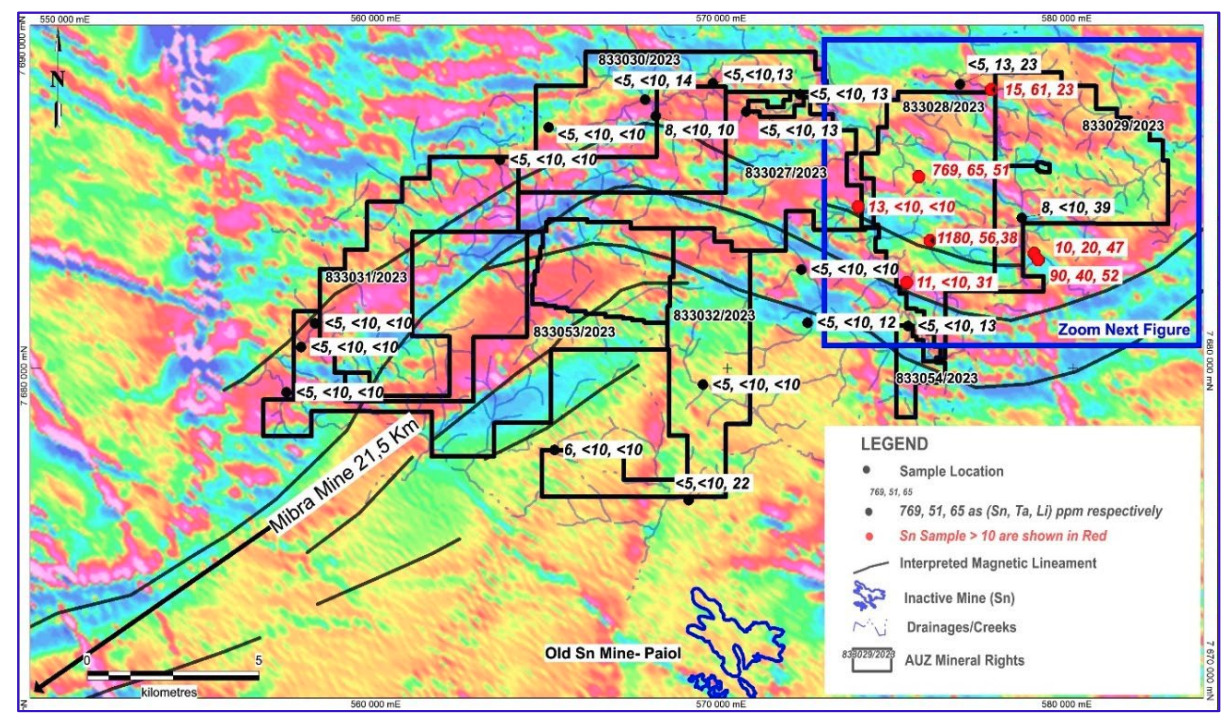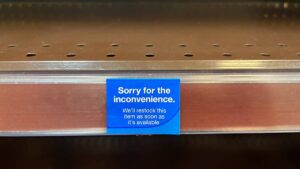Australian Mines finds three hearty drill-ready tin target areas at Resende

There’s potentially a good amount of tin at Australian Mines’ Resende project. Pic: Getty Images
- Australian Mines’ soil sampling identifies three drill-ready target zones with elevated tin at Resende
- Target zones may contain source of alluvial tin mining carried out in the 1940s to the south
- Geochemical results indicate potential to find pegmatite-greisen-related mineralisation systems similar to the Mibra mine
Special Report: Australian Mines’ soil sampling program has identified three drill-ready target zones with elevated tin at its Resende project in Brazil’s mining-friendly Minas Gerais state.
The soil sampling program comprised five lines that were 400m apart with samples taken every 50m along each line over previously identified tin, tantalum and lithium prospective drainage basins.
Sampling returned maximum values of ~60 times, 70 times and 30 times the average values of tin and pathfinder elements indium and bismuth respectively in the upper continental crust.
Australian Mines (ASX:AUZ) theorised the target zones may contain the source of the alluvial tin mining carried out back in the 1940s in the drainages downstream and immediately to their south.
Geochemical results have also indicated the potential to identify pegmatite-greisen related mineralisation systems being exploited at AMG’s Mibra mine about 17km to the west and historical alluvial tin production at Paiol to the south.
Mibra is one of the longest-running spodumene mines in the world with operations dating back to 1945 and produces tin, tantalum, lithium and feldspar concentrates.
“We are pleased that our systematic and cost-effective exploration approach has identified drill ready target zones within a very large tenement package,” AUZ chief executive officer Andrew Nesbitt said.

Target zones
Target Zone A is a tin-dominated area, which is believed to point to a tin-granite source in its proximity.
A broad anomalous trend from northwest to southeast covering a strike ~1,600m and a width of 300m is defined by this area, which remains open along strike to the east and west.
Target Zone B is a composite target with coincident anomalous values associated with tin, indium and bismuth which is interpreted to represent a tin-granite related hydrothermal system.
The area of interest appears to be 300-400m along strike and 300m across strike – though this may be extended to the west, east and south by further sampling.
Meanwhile, Target Zone C is characterised by a distinct coincident tin, indium and bismuth in soil anomaly contiguous with Target Zone A and is interpreted to reflect a lower temperature tin-granite hydrothermal system.
It has a strike of ~600m and width of 200m.
Upcoming activity
AUZ is carrying out further soil sampling across the adjacent drainage basins where earlier stream sediment programs identified prospectivity for rare earths.
Results from this work are expected by the end of September.
This article was developed in collaboration with Australian Mines, a Stockhead advertiser at the time of publishing.
This article does not constitute financial product advice. You should consider obtaining independent advice before making any financial decisions.
Related Topics

UNLOCK INSIGHTS
Discover the untold stories of emerging ASX stocks.
Daily news and expert analysis, it's free to subscribe.
By proceeding, you confirm you understand that we handle personal information in accordance with our Privacy Policy.








